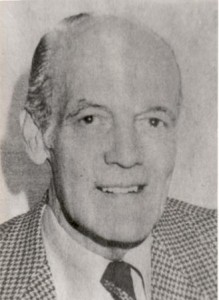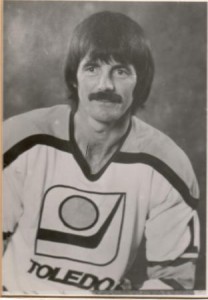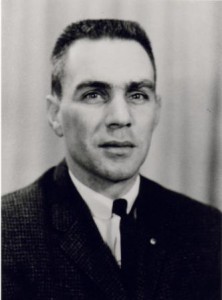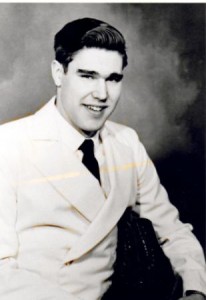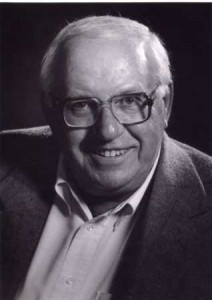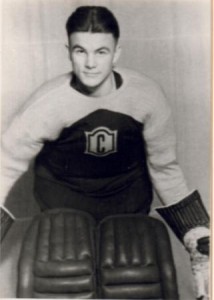 Reg Westbrooke was around the Collingwood sports scene so long his presence was almost taken for granted.
Reg Westbrooke was around the Collingwood sports scene so long his presence was almost taken for granted.
Fourteen seasons as the first string goalkeeper for the Collingwood Shipbuilders, A permanent first baseman on local baseball and softball teams, and, all sports scene as sports editor of the Enterprise-Bulletin.
After World War 11, Reg and a few other returning veterans resurrected the Collingwood Softball League and a merry six-year span was whetted but prolific newspaper coverage.
And while he was beating the drums for the softball loop, Reg was walking off with three batting titles. One season his average was an unbelievable .615.
He was a member of Collingwood at the age of twelve, played in the Junior Town League, the Junior O.H.A. team for three years and moved up into the Intermediate ranks in 1938.
Although still of junior age, Reg stayed with the Intermediates and was the back-up goalie for the late Tony Nobes when the Shipbuilders won the O.H.A. Intermediate “A” championship in 1939.
Two more seasons as the regular goalie for the Shipbuilders and Reg’s career was interrupted in 1941 when he enlisted in the armed forces.
The Army team pulled some strings inTorontoand he landed in a Senior League with a team of professionals, playing in theMapleLeafGardensbefore crowds of ten thousand and more.
Another two years of army service followed and Reg found himself playing on a couple of strong Camp Borden teams, one a championship club that was rated with the best amateur hockey teams ever assembled.
After the war, Westbrooke returned home and went in between the goal posts for the Shipbuilders. He became a fixture in this position for the next nine years from 1945 to 1954.
A couple of times, herald aspirants came on the scene but Reg always ended up as the first string goalie. For a good many seasons he operated without benefit of a back-up goalie.
He played goal for two O.H.A. title winning teams under the leadership of Eddie Bush, in 1951 and 1952 and on the 1953 finalists.
A rather unique experience over his ten post-war Shipbuilders seasons was his selection was made by the fans, another time by the club executive and a third time by his fellow players.
His hockey swan song came in March, 1954. Appreciative fans gave him a testimonial presentation when he hung up the pads and moved to Creemore to pursue a career in the newspaper publishing field. Reg married a Collingwood girl, Beverly Mirrlees, and had three children. One son, Don, has just completed a long professional hockey career.
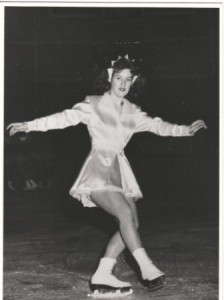 Pauline Piitz began skating on outdoor rinks in this area in the mid 1940’s, eventually joining the Blue Mountain Figure Skating Club when the new Collingwood Arena was completed in 1947.
Pauline Piitz began skating on outdoor rinks in this area in the mid 1940’s, eventually joining the Blue Mountain Figure Skating Club when the new Collingwood Arena was completed in 1947.

